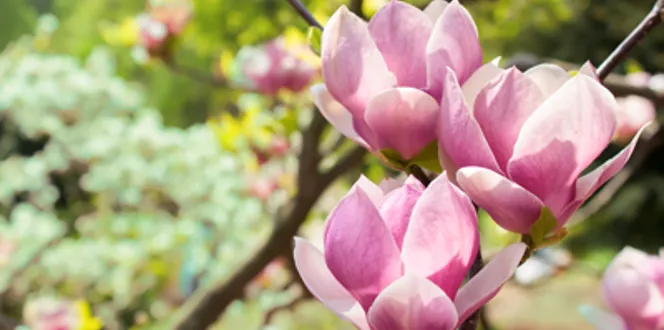It’s the most wonderful time of the year! We get to bundle up in cozy knit sweaters and savor every second of that crisp autumn air. And, of course, admire those rainbow-colored tree leaves!
Did you know trees shed their leaves to prepare for winter? It helps them conserve water and energy.
As you see the trees ready themselves for the season ahead, you, too, can begin putting your garden and landscape to bed for the season.
How to Close a Garden and Landscape in the Fall (Step-by-Step)
What are the benefits of winterizing the garden? Is it worth the time?
Absolutely. Just like you winterize your car and home, you’ve got to do the same for your landscape.
The more time you spend preparing now, the less time you’ll spend reacting in spring. And, if your plants enter winter stressed, their problems will likely be worse after a rough winter. So, be proactive! Make sure your trees, shrubs and lawn will thrive as soon as spring begins.
When should I begin putting my garden to bed for the winter?
When you see tree leaves changing and falling, close your garden for the season. Generally, October and early November are a good time to do so. If you’re further North or in a colder area, you can start earlier. If you live in an area where the tree leaves don’t fall, you don’t need to winterize!
How do I prepare my garden, yard and landscape for winter?
Plant Something New. Yes! It’s the best time of year to plant trees, shrubs and perennials. Before you put your garden to bed, add a few new plants.
Tidy the Ground. Rake leaves before mowing the lawn one last time. To improve your turf’s health, lower the blades to the lowest setting.
Look Up at the Trees. Worry less about tree damage this season by fixing potential problems before those nasty winter storms. Look for dead or dying branches, weak branch unions or limbs that hang or lean. If you see anything worrisome, take action.
Water and Fertilize. Once tree leaves have fallen, water plants and trees, especially evergreens. Also, it’s a good time to fertilize! Your trees may need to be fertilized now, and your lawn absolutely does. In fact, it’s the most important time to fertilize the lawn.
Add a Blanket (of Mulch). Apply 2 to 3 inches of organic mulch to insulate your plants. Want your mulch to retain its color longer? Wait until the ground freezes to apply.
Block Bugs. Had troubles with aphids, mites or scale? Use dormant oil to eliminate their larvae. Before you start, make sure it’s been under 32° for at least two days.







